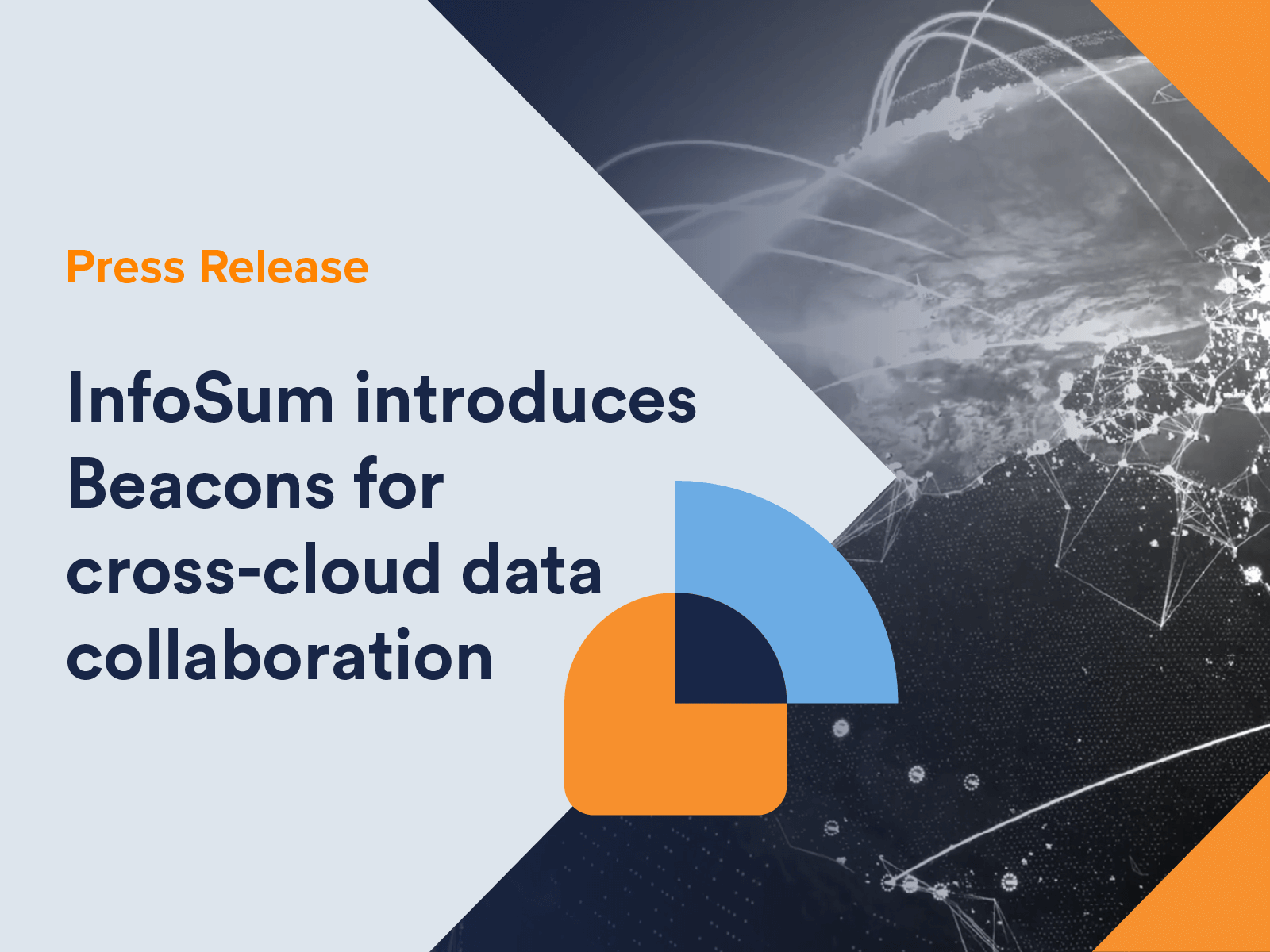This is the year of data clean rooms.
According to a recent Deloitte survey of 500 brand executives, 95% of marketers are now familiar with data clean rooms (DCRs), and 34% have embraced them for at least some of their marketing and advertising initiatives. They are, in my colleague Devon DeBlasio’s words, “starting to become second nature.” But is everyone using them to their full potential?
My job at InfoSum consists of helping marketers like you make the most of their DCR investments, and I’ve found that the vast majority are under-utilizing the technology and leaving money on the table.
Let me explain with a trip to the top of Africa.
Pushing beyond the first peak
In 2010, I climbed Kilimanjaro with some friends. I’m an avid hiker and I thought I was prepared for it, but after six days of difficult hiking in increasingly thinner air, I couldn’t wait to get to the top. When I finally saw the summit, I gave it my all and raised both arms in victory (and relief) when I reached it—only to see the path drop again and rise to an even higher point in the distance. I was standing at Gilman’s Point, 18,638 ft, a false peak. The true summit, Uhuru Peak, was still more than an hour away at 19,341 ft.
That last hour was the hardest hike I’ve ever done. The terrain wasn’t all that difficult, but after the disappointment of the false peak, I was completely deflated. The lack of oxygen didn’t help, and it took all I had to get going again. I’ve drawn lessons from that experience ever since, and I see it as a fitting metaphor for what’s going on with DCRs at the moment.
Most marketers today use DCRs for activation: To connect their first-party data to a media company’s ecosystem and reach their customers and prospects on that platform, without jeopardizing anyone’s privacy. And most media companies invest in DCR capabilities to facilitate that match. That’s a terrific and highly-effective use case for DCRs, but it’s also a false peak. Data clean rooms are at their best when they’re used not just for activation, but for measurement as well to help marketers close the loop and optimize their marketing campaigns.
That’s the true summit, but most turn around before they get there. In its State of Data 2023 report, the IAB recently sized up the missed opportunity: No more than 26% of DCR users are currently using them for any type of advanced measurement.
Why is measurement so important today?
It’s always been hard for brands to stand out from the crowd, but it seems that the COVID-19 pandemic has put all key levers in hyperdrive, doesn’t it? The economy, media fragmentation, increased competition, new shopping habits, privacy regulations, the adtech infrastructure itself: They’re all changing so fast that most marketers are struggling to keep up.
Budget pressures from the C-suite aren't helping either. Where does the money come from when a promising new retail media network, CTV platform or true crime podcast takes off, or when a Barbie tie-in opportunity comes knocking?
I’ve been around marketing consultants my whole career, and I’ve seen my fair share of high-flying presentations on how to run better, faster, cheaper marketing campaigns. Measurement was almost always an afterthought, a small box at the end of a workflow, if it was featured at all. No big deal if you skipped it: The thinking was that it was too hard to do well anyway, too costly, and too time-consuming to have any impact on a campaign while it was still on the air. “Use this recipe,” most recommendations went, “we know it works.”
But in today’s market, measurement is central to understanding what works and what doesn’t. You can’t rely on a recipe when the world around you is changing. You need to know if you’ve reached the right audience, targeted the right consumers, allocated funds to the right media channels and picked the right creatives to move the needle. And you need a platform to help you change course on the fly, based on that feedback. It’s precisely because it’s difficult to do that measurement will help you outsmart your competition.
What key measurement capabilities should you strive for, and how is a DCR going to help?
DCRs unlock key measurement capabilities
#1: Incrementality:
With the marketing ecosystem growing more complex by the day, large, holistic measurement initiatives like marketing mix modelling (MMM) and multi-touch attribution (MTA) have become more taxing on marketing teams, and often less reliable too. To fill the void or add a more nimble measurement solution to their quiver, many marketers are turning to incremental testing: isolating certain campaign elements on a given media channel and testing their effectiveness against unexposed consumers in a control group, not unlike the way that randomised clinical trials are run in the medical world.
But to be effective, incremental testing needs to have tight rules over the composition of the various test and control groups, and therefore access to sensitive customer data. This is incredibly risky, but a decentralized DCR like InfoSum that obfuscates personal data and allows data analysis without any data movement can make the whole process a breeze. Recently, a global fintech platform used InfoSum’s DCR technology to perform incremental testing and attributed an 18% lift in app downloads to an innovative campaign it was running on ITV in the UK. The whole process was quick and painless, and the results took the company’s media planning capabilities to a whole new level.
#2: Cross-channel reach and frequency:
Reach and frequency are the backbone of advertising. Marketers want to reach their target audiences with minimal waste, and with enough frequency to have an impact. This was true when TV was pretty much the only game in town, and it’s no less true today despite the current proliferation of advertising channels. But how do you measure reach and frequency across dozens, even hundreds of advertising platforms, and avoid bombarding consumers with never-ending repeat messages?
Consider this: the average programmatic campaign on the open web runs on 44,000 websites, according to the ANA’s recent Programmatic Transparency Study. Even if you focus on your top dozen or so media partners, you need to reconcile how they’re measuring performance and convince them to report metrics that make sense to how you do business. If you don’t want to pay for impressions where less than 70% of the ad was in view, you need to be able to see exposure data at that level of granularity. A modern DCR will help you connect the dots in a safe environment and deduplicate audiences across seemingly incompatible media platforms.
#3: Audience optimization
Success in marketing starts with targeting the right audiences. The best offers and most polished creatives in the world won’t get you very far if they’re falling on deaf ears. Measurement allows you to profile a partner’s audience and identify consumer segments that are most likely to respond to your message. If you’re teaming up with second-party or third-party data sources to enrich your own data, measurement can help you properly assess the value of those data relationships, the price you’re willing to pay for them, and ultimately the rate you should be paying for your media buys.
Trust and transparency are essential for any of those analyses to bear fruits. Data partnerships used to be long, cautious, and sometimes confrontational corporate exercises, but DCRs have completely changed that dynamic. It’s now possible to collaborate without sharing any customer data and target the right consumers with highly relevant messages without compromising their privacy. A great example is the work that Renault just did to understand the demographic and behavioral profile of its best-performing customers, and identify lookalike prospects on Axel Springer’s media properties. The company was able to reach consumers that were 38% more likely to be potential car buyers, and it improved its conversion rate 18% over a baseline cookie-based campaign.
Going the distance
Here’s my advice: If you’re just starting on your journey and building a case for investing in DCR capabilities, make sure that measurement has a place at the heart of your data collaboration strategy. That’s where you’re likely to see the greatest benefits, and you’ll have the right resources in place to capitalise on the opportunity from the start.
And if you’re already using a DCR and enjoying the view from Gilman’s Point, gather your strength and hit the trail in front of you. We’ll be there to hold your hand.
For more details, check out our guide: Measurement in the age of privacy.







